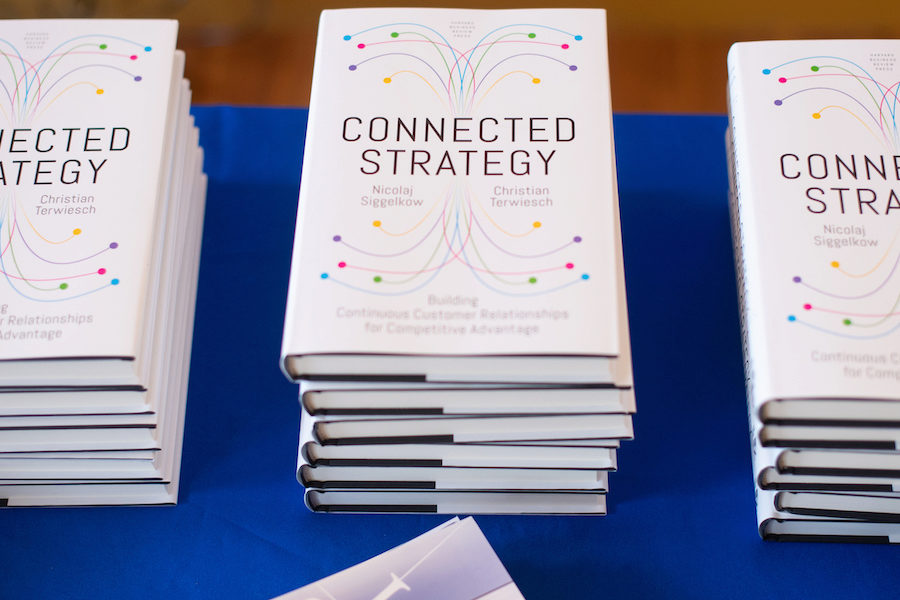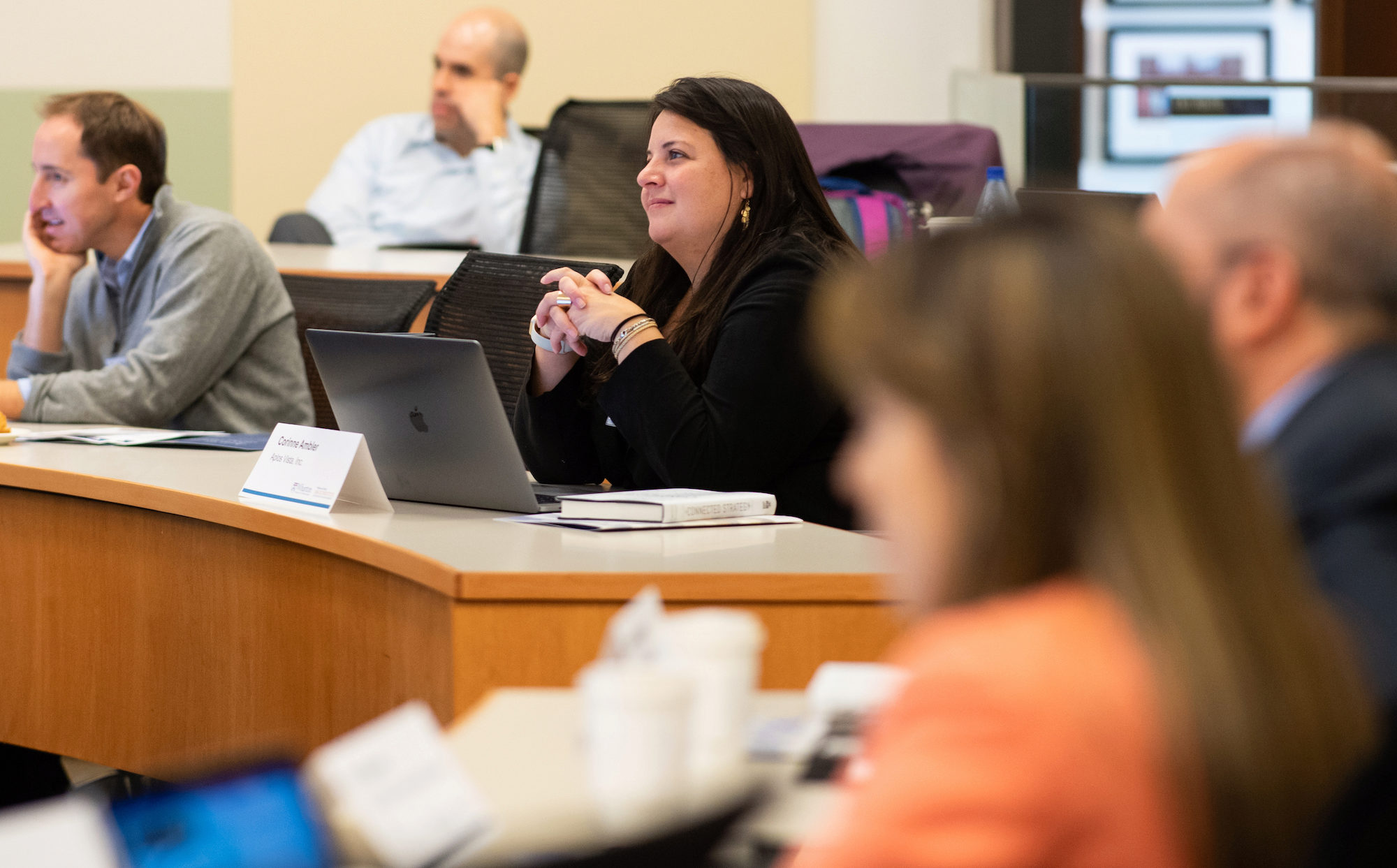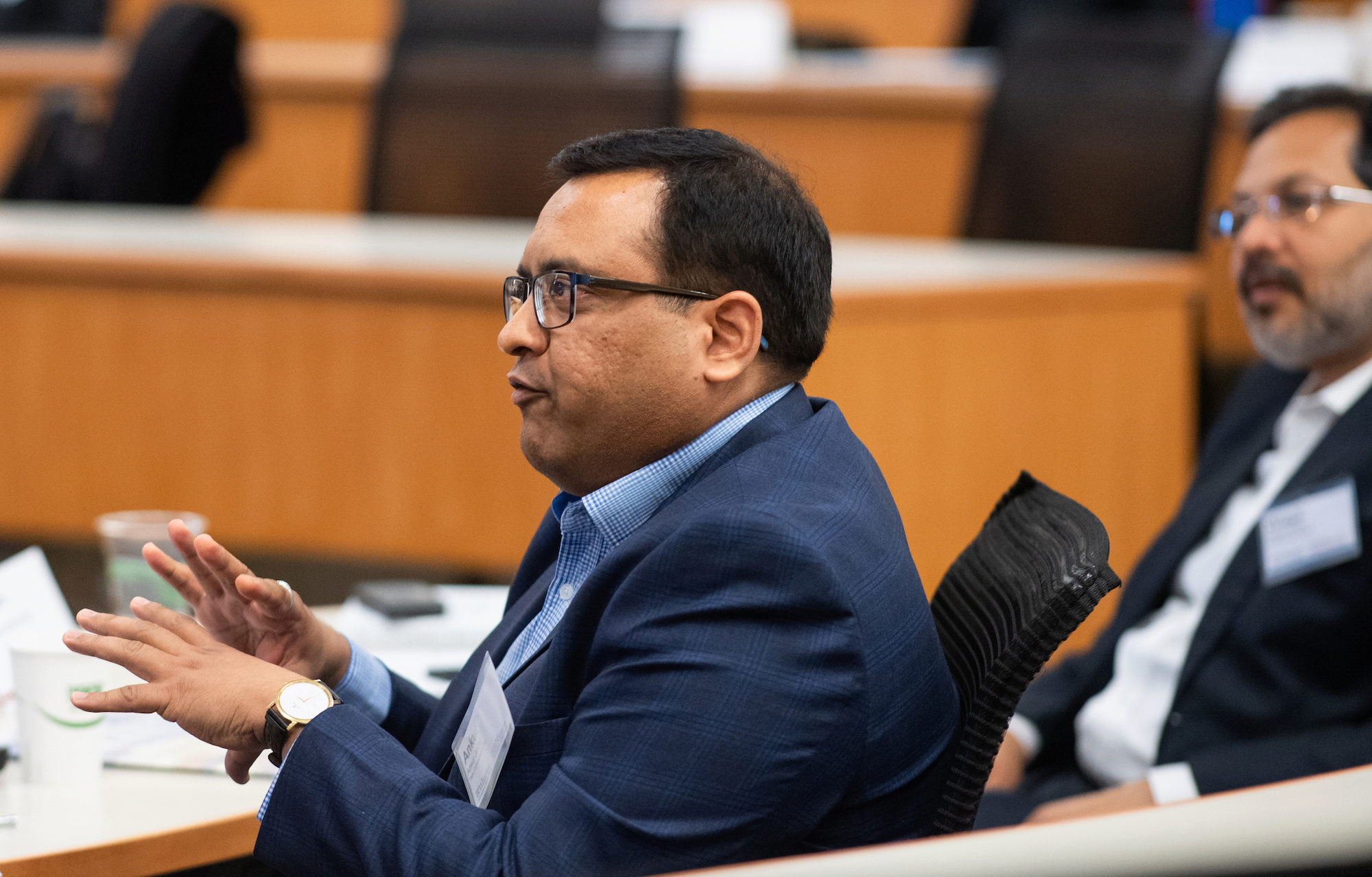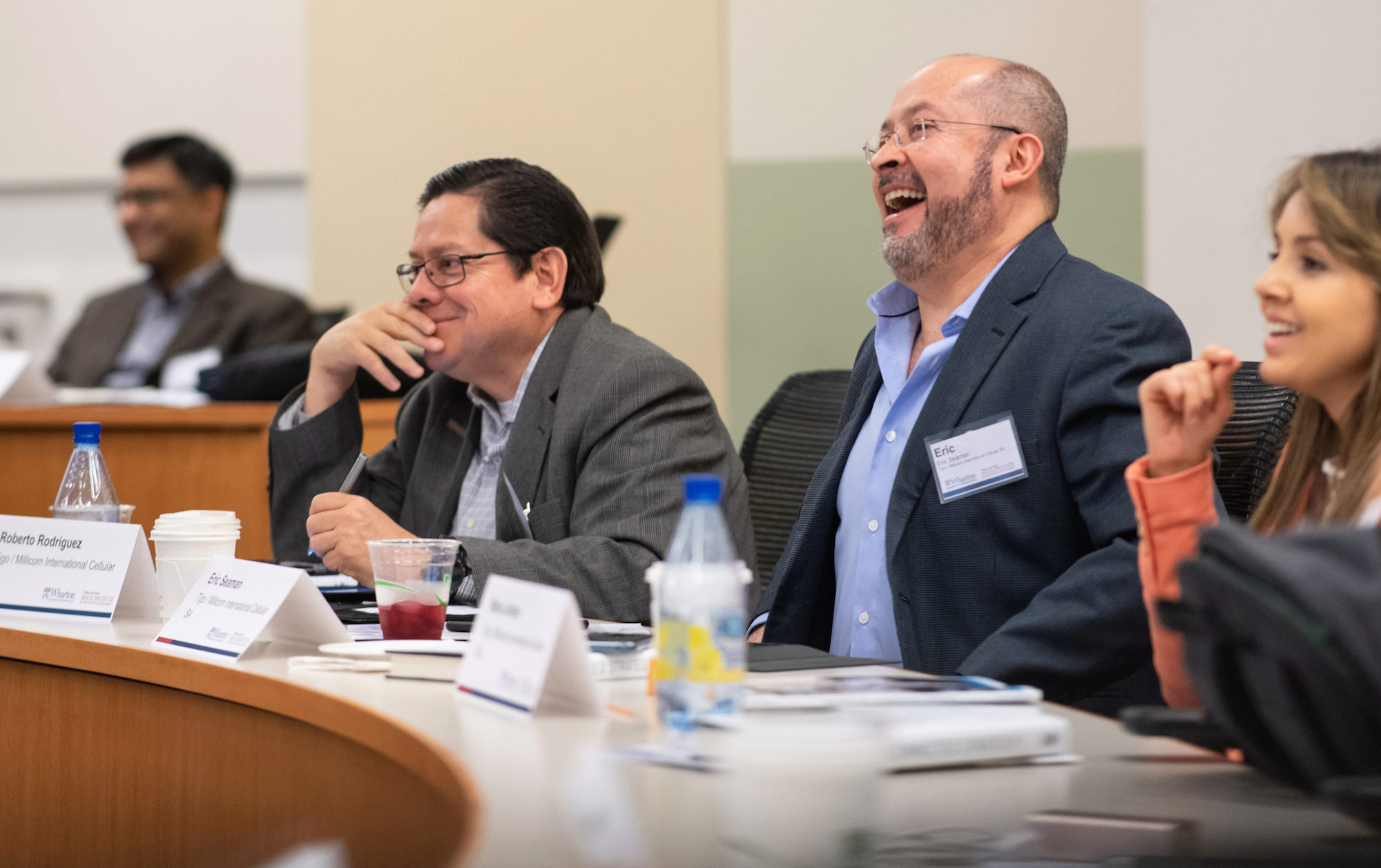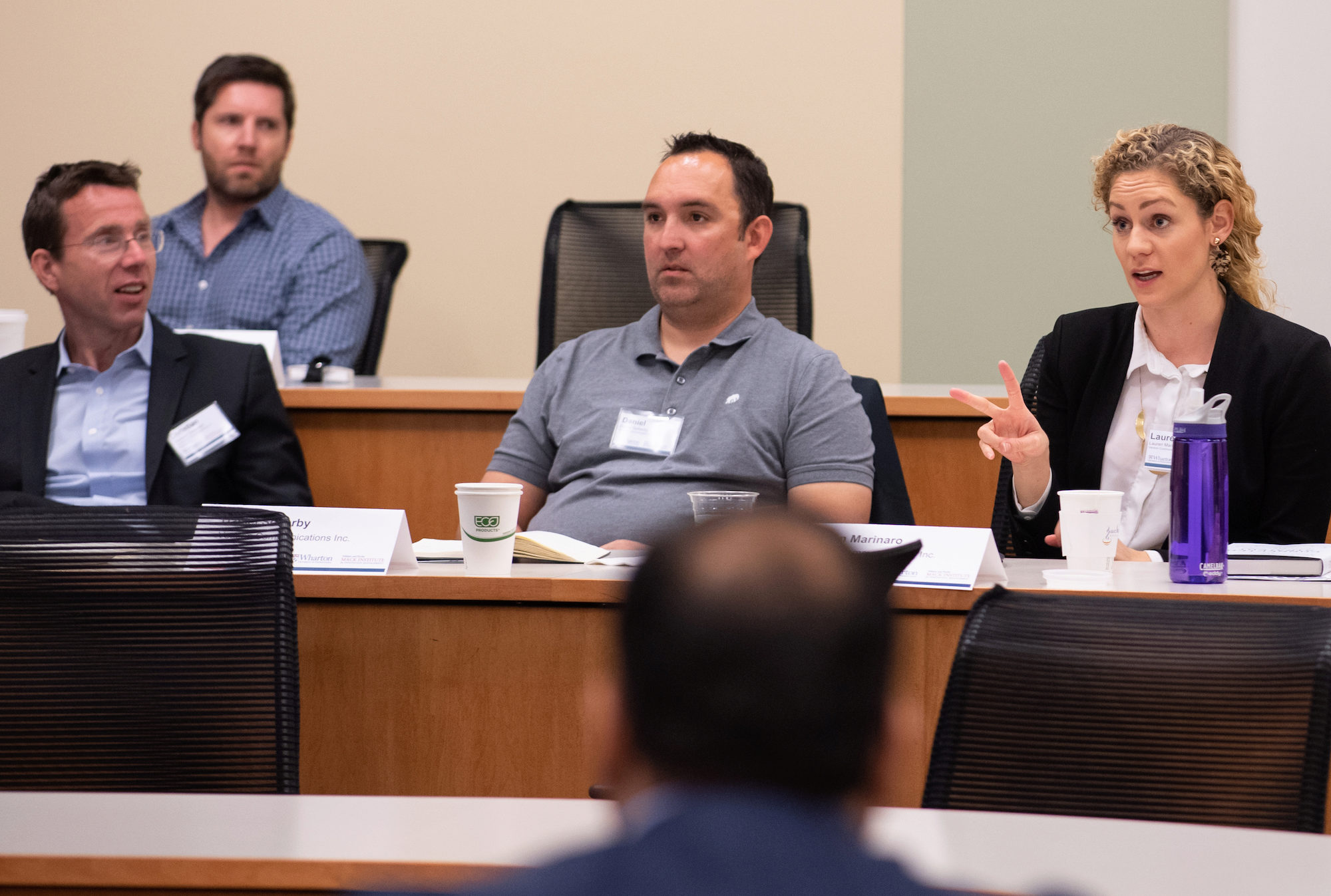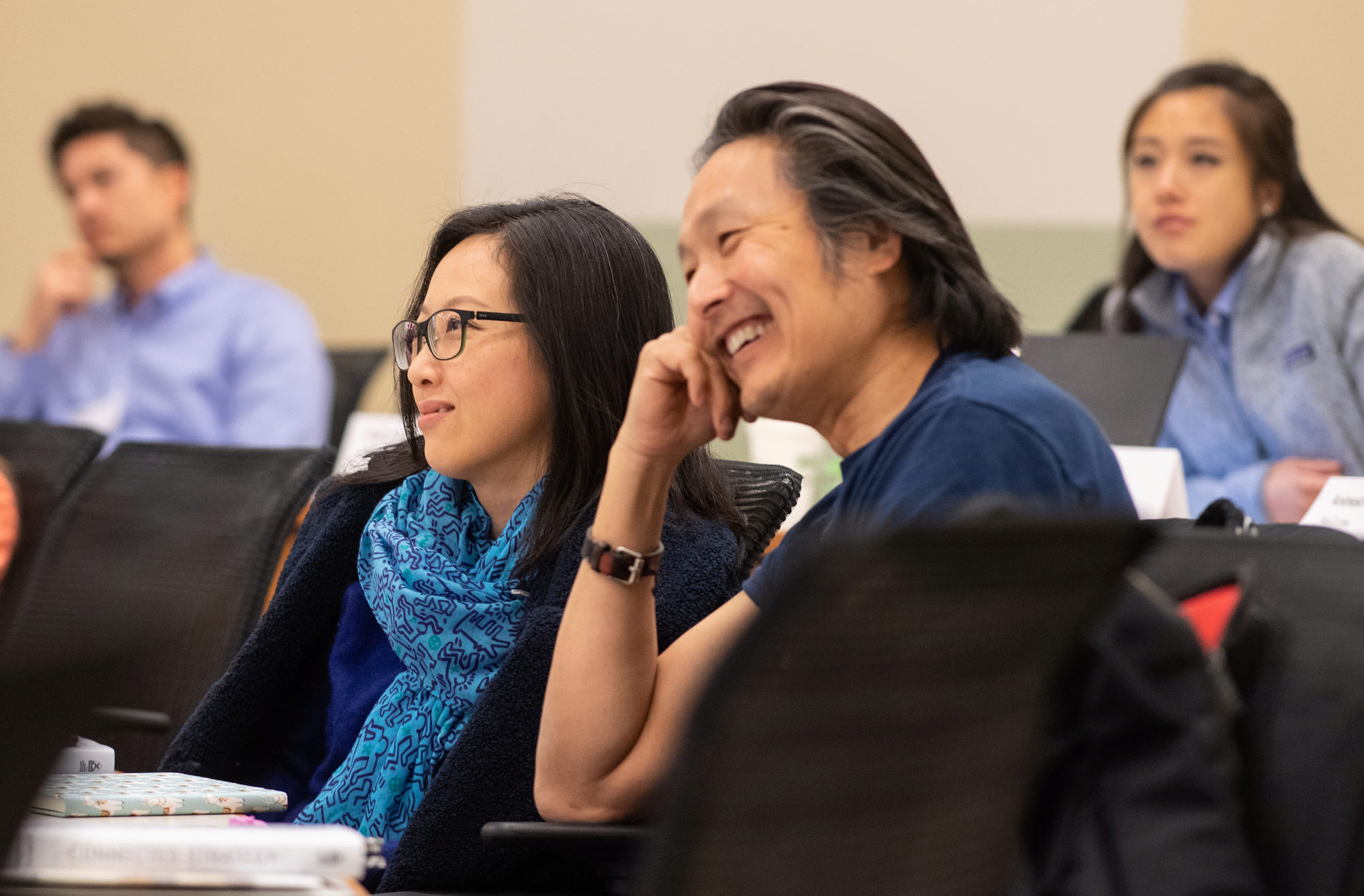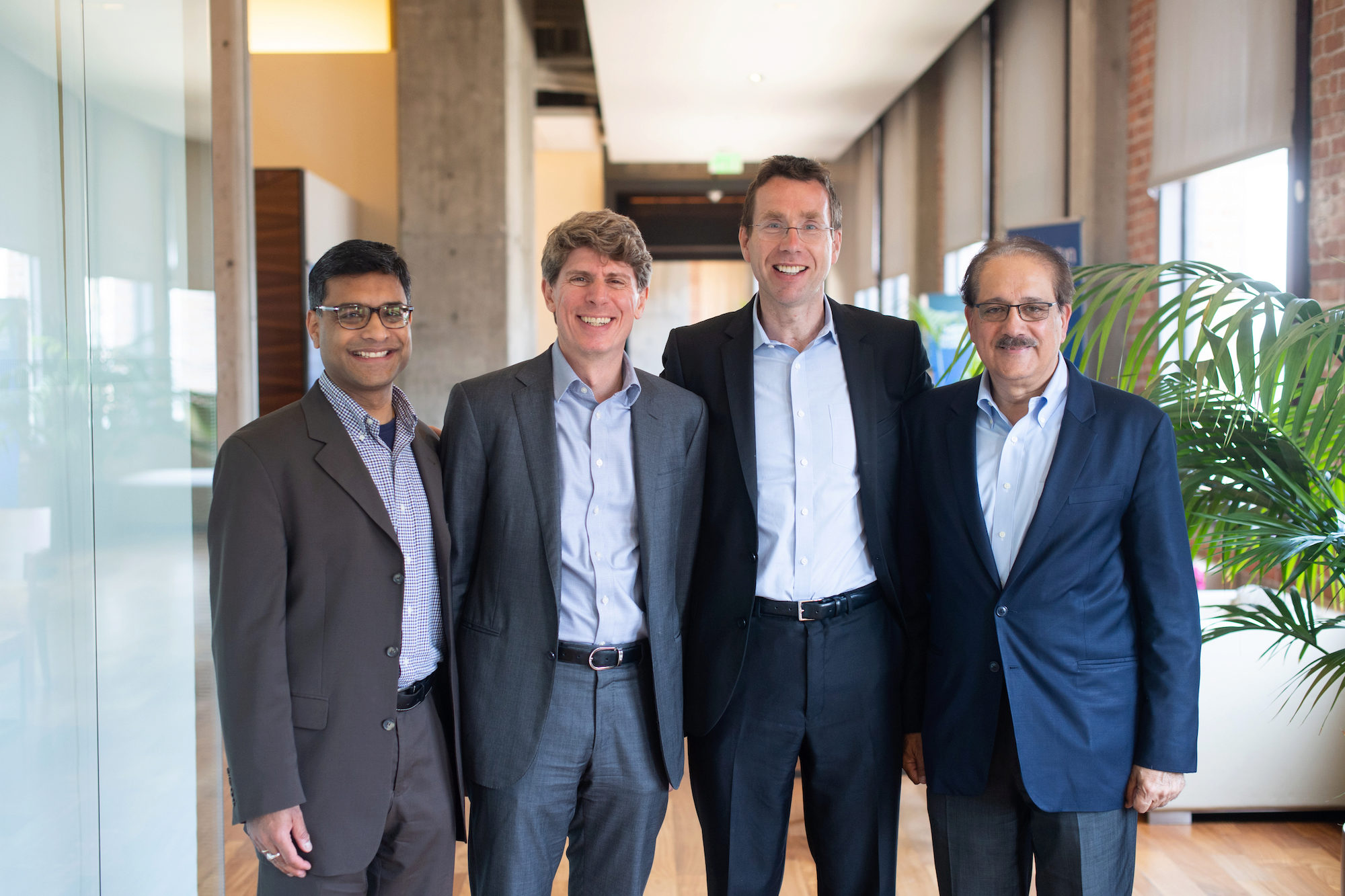Wharton operations professor Christian Terwiesch’s 20-year-old son is “totally into electric cars.” So Terwiesch treated him to a weekend Tesla rental using a platform called Turo, where individual owners offer their vehicles. They had a blast with their Model S, Terwiesch said, except for a recurring problem with the tire pressure. They inflated the tires but that pesky dashboard light didn’t go away.
Then, on Sunday morning, Terwiesch emerged from church into the parking lot to find a tow truck looming behind the Tesla.
 He was stunned, until the tow truck driver explained that there’d been a service request from Tesla. While Terwiesch was in church, the driver had changed all four tires, and the car’s owner had already authorized payment electronically. “Car’s good to go. Have a nice day,” said the service person.
He was stunned, until the tow truck driver explained that there’d been a service request from Tesla. While Terwiesch was in church, the driver had changed all four tires, and the car’s owner had already authorized payment electronically. “Car’s good to go. Have a nice day,” said the service person.
Terwiesch realized that both Tesla and the car’s owner had access to data generated by various sensors on the car as he and his son drove it around. The company had been able to make a needed repair for a customer at an almost unheard-of level of responsiveness.
“I think that story really gets to the heart of connected strategy,” he told the audience at the Mack Institute’s Spring Conference 2019 in San Francisco.
How Connected Strategies Can Create Magic for Customers
Terwiesch and Wharton management professor Nicolaj Siggelkow, co-directors of the Mack Institute for Innovation Management, are the authors of the new book Connected Strategy: Building Continuous Customer Relationships for Competitive Advantage, which shows how companies are improving both the customer experience and operational efficiency.
Once-sporadic interactions with customers, Terwiesch told conference participants, can now be transformed into personalized, ongoing relationships for business success. The catalyst for this change? The increasing availability of leading-edge new technologies that can enable a far-superior customer experience at a lower cost.
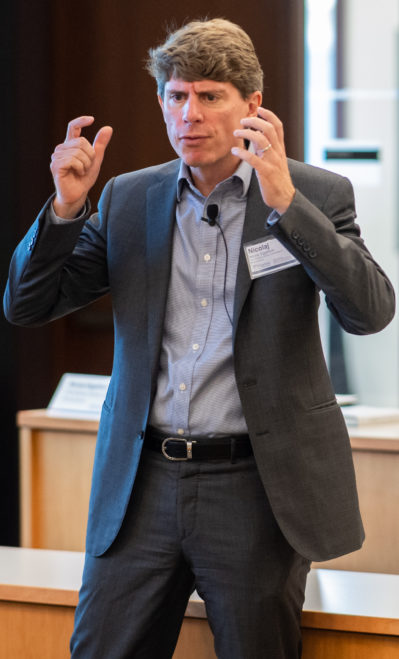 A notable example of connected strategy is Disney theme parks. Upcoming visitors are mailed a MagicBand bracelet that uses RFID (radio-frequency identification). Disney is using these devices to create more enjoyable experiences for customers, while at the same time increasing its efficiency.
A notable example of connected strategy is Disney theme parks. Upcoming visitors are mailed a MagicBand bracelet that uses RFID (radio-frequency identification). Disney is using these devices to create more enjoyable experiences for customers, while at the same time increasing its efficiency.
The wearable device conveniently serves as one’s entry ticket, room key, and digital wallet for meals and souvenirs. If you place a food order electronically, waiters can locate you wherever you are in the park. If parents wish, Disney character actors can electronically receive a child’s information as they approach so they can greet them by name. The technology even helps Disney manage long ride lines by nudging visitors to try other attractions when the most popular ones are jammed. Visitors can receive personal memory books to take home, featuring photos snapped automatically at various park locations.
“It’s a home run … a real breakthrough in consumer experience,” said Terwiesch.
He noted that today — as opposed to, say, 10 years ago — you don’t even have to be a megacorporation to take advantage of technology such as RFID or customer analytics.
This availability of technology is, however, a double-edged sword, as pointed out by Siggelkow. “A lot of these technologies are basically out there,” he said. Uber “did not develop cell phones, GPS chips, and Google Maps … . To create a connected strategy, for the most part you do not have to become a technology company.”
The bad news, though, is that while you may have access to these innovations, so do your competitors. “How can companies distinguish themselves if all have access to the same technology, and imitation is likely to be rampant?” asked Siggelkow.
He said if companies can have repeated interactions with a group of customers and use those to learn more and more about each individual, they can excel with a virtuous circle of “recognize, request, respond, repeat.”
Podcast: Nicolaj Siggelkow and Christian Terwiesch discuss Connected Strategy.
“We believe that the source for sustained competitive advantage will actually come through this process,” Siggelkow said.
Satisfying customers’ individual preferences will also help combat the potential “creepiness” factor of connected strategies, he noted. For example, when Netflix makes movie recommendations, “I don’t know that I want them to automatically start streaming something.” Maybe some viewers will like that, but others won’t. (Terwiesch, too, had identified an edge of “creepiness” in his Tesla tire change experience: the fact that he and his son’s movements were being tracked.)
Summing up, Siggelkow said that a connected strategy consists of two elements: the connected customer relationship (with its loop of recognize, request, respond, and repeat) and the connected delivery model. Success hinges on boosting the customer’s happiness and willingness to pay (WTP) for the product. And the delivery model must create this great relationship at a relatively low cost, by utilizing a successful connection architecture, revenue model, and technology infrastructure. “If you can do both things — drive up WTP while reducing cost — that is really what creates disruption in industries,” Siggelkow said.
Moving Beyond Sneakers and Jerseys: Shahab Salemy of Nike
An image of a Nike sneaker, with several glowing dots, appeared on the screen.
Shahab Salemy explained that it was Nike’s new Adapt BB basketball sneaker, a connected product. A smartphone app allows the wearer to fine-tune the shoe’s fit and features so that it “adapts to your foot to provide a locked-in feel for distraction-free play,” according to Nike’s website.
“This is the future of footwear,” said Salemy, who is the general manager of connected products at Nike. “We’re going to start incorporating more technology in your footwear to do new things.” He said that Nike is planning to include this particular platform in four or five new sneaker models next year.
Salemy leads the team driving the strategy and implementation of digitally enabling Nike products. “The idea at Nike is,” he said, “how can we create a unique digital identity for all of our products, from production all the way through to consumer experience?”
He pointed out that Nike’s approach to technology is different than in the past, when it would dedicate a large group of engineers and in-house teams to build a single revolutionary product (such as Nike’s Fuel Band fitness tracker from several years ago). “It’s not just about one shoe, one platform [anymore],” he said.
 Echoing Siggelkow and Terwiesch’s point about the wide availability of high-tech, Salemy said, “A lot of the technology that we’re using today is out there in the world. We’re not creating [it] new.” Instead, he said, Nike is diversifying its portfolio and “putting simpler technology into a lot more products for broader use cases.”
Echoing Siggelkow and Terwiesch’s point about the wide availability of high-tech, Salemy said, “A lot of the technology that we’re using today is out there in the world. We’re not creating [it] new.” Instead, he said, Nike is diversifying its portfolio and “putting simpler technology into a lot more products for broader use cases.”
He gave the example of a LeBron James basketball jersey that could have an inexpensive digital chip called an NFC (near-field communication) embedded in a tag. Tapping the tag would seamlessly send customized basketball-related information to the user’s phone, such as Lakers game recaps and other NBA highlights, via Nike’s partnerships with the NBA and YouTube. This type of approach would enhance and extend the customer relationship.
Salemy also described how Nike is adopting existing technologies to enhance its operations. The company is employing RFID and digital scanning to speed desired colors and styles to customers faster than ever before, and also to fight the persistent problem of counterfeiting.
“For us, it’s not about the technology,” Salemy said. “It’s more the value our products provide aroundthe technology that’s the interesting part of what we do.”
Making an Investment in Connected Customer Relationships: Curtis McKee of Intel Capital
For Curtis McKee, the connected customer relationship is not about trying to reach retail consumers but Silicon Valley entrepreneurs. An investment manager at Intel Capital, McKee shared innovative ways that he, as a corporate venture capitalist, forges new business ties in this B2B space. Intel Capital deploys over $350 million per year in capital, and about 35 new deals globally.

There’s a lot of capital in the system right now, said McKee, so every VC has to have “something that’s providing a competitive advantage … [showing] why you would want to take this firm’s capital versus the next.”
He said that venture capital firms differentiate themselves by establishing continuous customer relationships.
As an example, McKee shared an 18-month business development plan template with each phase tailored to the growth phase of the particular startup. “They may be at Series A versus a seed; they’re going to have different needs,” he observed. The plan includes the benefits that Intel Capital can offer entrepreneurs in addition to funding. One major benefit is access to Intel’s global sales force — thousands of account managers — and to its scale partners. “That should be very attractive to the entrepreneur who’s thinking about, ‘I need to start building great relationships across the verticals that I care about,’” said McKee.
Another offering involves company-building resources, which might for example help a startup hire a VP of sales or figure out where to locate its offices. These kinds of value-added services, McKee said, are a great draw for entrepreneurs “who might be fresh out of a PhD program” and haven’t put much thought into logistics, or those who don’t have experience with hiring senior sales executives.
Establishing trust is paramount, he said, discussing the forging of a deeply personalized experience with the entrepreneur. An advisory network is an important element. “They don’t [yet] have the network — they’ve been focused on their product,” he said. McKee also described Intel Capital’s Global Summit, in which corporate partners of Intel Capital gather and have one-on-one time with startups. That can lead to a lot of different business opportunities for the portfolio companies, he said.
Being available on a continuous basis is another important differentiator as an investor, in McKee’s view. In addition to convenient office hours, this availability could include a Slack channel, social feeds, a monthly letter, and outreach surveys.
McKee referenced Terwiesch and Siggelkow’s “four R strategy” for connected customer relationships — recognize, request, respond, repeat — saying he believes in curating a “lifecycle approach” that will deliver optimum success for his clients.
The Vision of a Connected E-Marketplace: Vinaya Varma of mjunction
Making connections is what Vinaya Varma’s company is all about. Varma is the managing director and CEO of mjunction, a B2B e-auction platform for industries including coal, steel, minerals, obsolete capital equipment, industrial supplies, and financial services. He explained that the company’s goal is to eliminate “value-destroying middlemen” and create robust, sustainable supply chains through greater efficiency and transparency.

Podcast: Vinaya Varma discusses B2B e-commerce.
Based in Kolkata with 41 offices across India, mjunction helps businesses buy and sell with other businesses through an e-commerce solution that creates value for all parties, according to Varma. The firm covers sales, sourcing, procurement, finance, and loyalty solutions. The value of goods and services transacted on the platform last year was $21 billion, which Varma said makes mjunction the largest B2B e-commerce company in India.
Varma described what users get. Through the eForward auction, enterprises can convert inventory into cash quickly. The eReverse auction can help businesses buy competitively. With the eProcurement platform, which features a “pay as you use” model, companies can improve their efficiency and effectiveness in procurement. With Loyalty and Gifting, enterprises can sell more through their trade channel.
Mjunction was launched to help large firms connect with their suppliers and buyers. “That was part of the approach we took, because we knew that to get quick liquidity on the platform, we must have an anchor organization [such as] a large enterprise, which has the power of attracting the other trading partners.” Today, he said, mjunction has 146 large enterprises, close to 39,000 buyers, 75,000 dealers and distributors, and over 200,000 suppliers. The platform’s focus today, according to Varma, is “how do we make those connections efficient and effective.”
Varma noted that mjunction is a two-sided platform: buyers on one side, sellers on the other. But now that the platform is becoming a substantial ecosystem with other entities such as transporters and banks coming on board, mjunction is broadening its sights. In the example of an e-marketplace for steel, Varma shared, there’s a way to connect multiple players: a steel processing center, inspection center, warehousing, and various financial entities would all be included.
“We have started building this model and we hope to go live in about six months,” said Varma. “Wish us luck.” He added that some of the insights he gathered at the conference would help mjunction make its expanded connected marketplace a success.
Customer Service Faster Than Humanly Possible: Abhijit Kakhandiki of Automation Anywhere
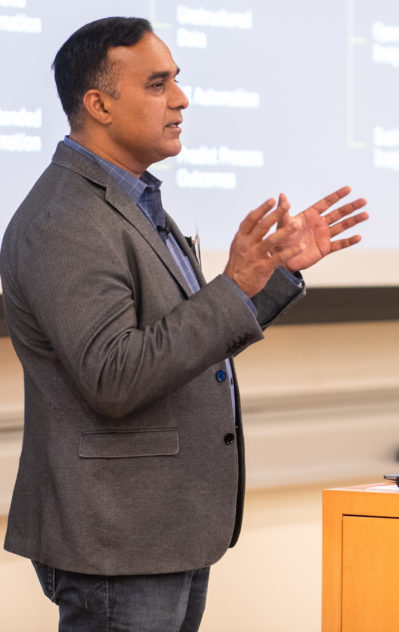 What are some of the new technologies enabling connected strategies? Abhijit Kakhandiki, an SVP of products and engineering for Automation Anywhere, talked about one: a process by which employees, with very little training, can create software-based “robots” to perform routine tasks. This enables what might be described as a quantum leap in client service, yielding greater customer satisfaction, said Kakhandiki.
What are some of the new technologies enabling connected strategies? Abhijit Kakhandiki, an SVP of products and engineering for Automation Anywhere, talked about one: a process by which employees, with very little training, can create software-based “robots” to perform routine tasks. This enables what might be described as a quantum leap in client service, yielding greater customer satisfaction, said Kakhandiki.
Using Automation Anywhere’s products, an employee can “teach” a bot one of their everyday job tasks by recording the steps. The bot, in the background, writes code for that task, and provides a visual trail for the employee to check the accuracy. The employee can either accept it as is and begin using the bot, or hand the project off to a developer for more advanced programming.
Employees can also visit Automation Anywhere’s “Bot Store” where ready-made bots that perform various tasks can be downloaded for use. The bots even have “resumes” that list their capabilities. “You can have a bot that talks to a Slack Channel, one that can call you, one that can create a support ticket for you, and things like that,” said Kakhandiki. “We’ve got 500-plus bots.”
The platform uses robotic process automation, or RPA: software that draws on artificial intelligence and machine learning to handle repetitive tasks such as queries, calculations, and record maintenance. The bots can take in and process an impressive variety of data including phone calls, emails, human conversation, and computer databases like Salesforce.
Kakhandiki took the audience through an example of using bots in customer service: helping a customer add their spouse to an existing auto insurance policy. The bots retrieved and downloaded driving records; auto-populated new member details into an application; and even calculated the premium and entered that information as well. “And simply by clicking on the image of the customer’s spouse, you can even generate their membership card,” he said.
Automation Anywhere is the world’s most widely deployed digital workforce platform, according to Kakhandiki. Its products are used in over 90 countries.
“In the modern digital economy, we will be the largest provider to deliver the digital workforce with velocity, scale, and security,” he said. “But at the end of the day, it’s all about what Automation Anywhere has done for your firm.”
He cited wins such as higher productivity, increased revenue, and increased referral revenue — all achieved by being able to serve more customers and fulfill their needs faster than ever before.
From Fun Electronic Game to Serious Competitive Advantage: Timoni West of Unity
How will we live and work in a future where digital objects and real objects exist side by side? A highly visual presentation by Timoni West of Unity Technologies hinted at what this bold new world might be like, and how it will enable cutting-edge connected strategies.
West is the director of XR research (augmented and virtual reality research) at Unity, a widely used creation platform. Her cross-disciplinary team of artists and engineers focuses on “spatial computing”: new interfaces for human-computer interaction.
While Unity was forged in the gaming industry, West explained, the company has expanded into a variety of verticals like automotive, film, and AEC (architecture, engineering, and construction), and organizations outside of gaming are leveraging Unity’s real-time technology to save time and money. With visual content more appealing than ever to consumers, real-time technology will continue to emerge as a tried-and-true technique for visualization, modeling, and creation of almost any project across industries.
“Of the people in this room, probably about 80% of you have at least one app on your phone that was made with Unity,” West told the audience.
West’s company works to refine and problem-solve around emerging technologies, but also looks to invent the next generation of augmented and virtual reality techniques. “We’re figuring out what’s going to make Unity solvent over the next 10, 20, 50 years. What do we need to build today to make sure that people are still using Unity to build worlds in the future?”
West talked about some of the emerging applications of her company’s work beyond gaming. For instance, synthetic data could be created for machine learning to use. West gave the example of a “billion cars driving on a billion roads in what feels like a real environment” to aid in the development of self-driving cars. Data could be created to help improve machine learning, boosting critical capabilities including object recognition and natural language processing.
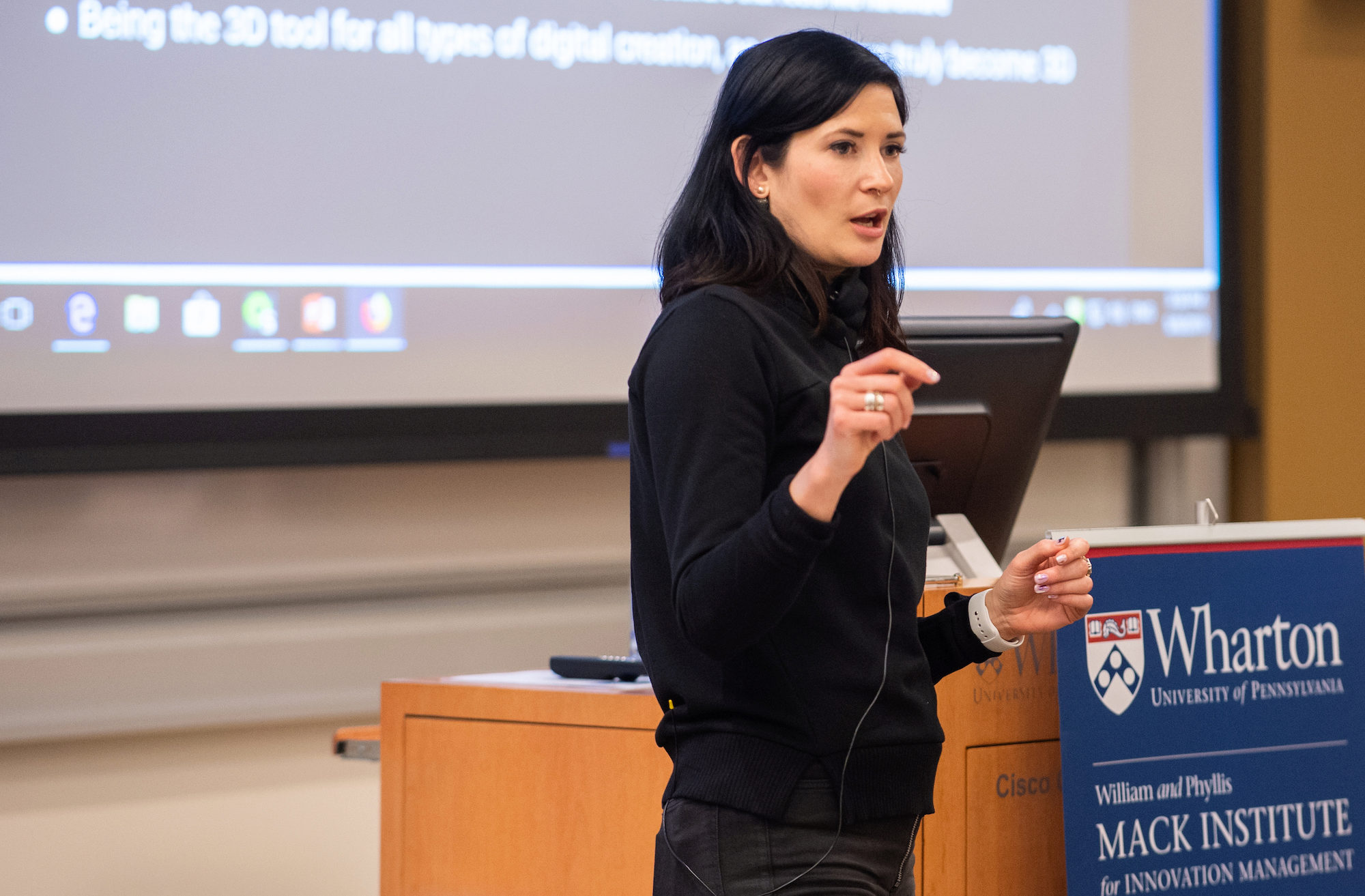
West envisioned a future in which most computing takes place in the cloud, so that people would be able to have a computing session running continuously. “This is fascinating because it means you are no longer limited to the [devices] that are around you in terms of what you can see and do with the computer.”
“I’m excited for this future,” she said. “Let’s do this.”
Throughout the conference, participants had the opportunity to discover and consider all facets of connected strategy. The speakers prompted thinking about ways to build connected strategies in their industry; how to nurture connected customer relationships; the connection architectures that would make this new approach possible; and some of the leading-edge technologies that are becoming increasingly accessible to businesses of all sizes.
“Every firm will need to have an array of connected customer experiences, and tailor them to different customers on particular occasions,” Siggelkow said.
Conference attendees left with a plethora of real-world ideas for guiding their firms into that future — and a copy of Terwiesch and Siggelkow’s Connected Strategy: Building Continuous Customer Relationships for Competitive Advantage.




